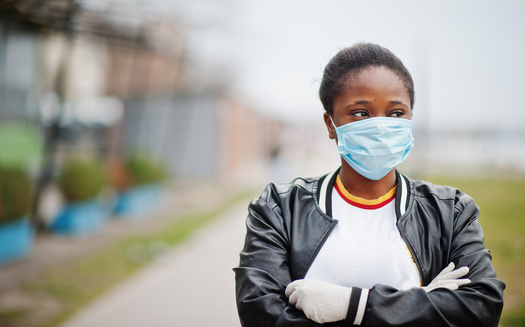
African girl at park wearing medical masks protect from infections and diseases coronavirus virus quarantine.

Share
A new study reinforces data that show minority groups are disproportionately affected by the spread of the coronavirus. The latest research looked at hospitalization rates in 12 states, including Minnesota.
The study was led by Professor Pinar Karaca-Mandic at the University of Minnesota’s Carlson School of Management. She said in the states that were examined, Black residents were hospitalized for COVID-19 at rates well above their share of the population.
She said because the rate of testing doesn’t tell the whole story when it comes to overall infections, hospitalizations are a more reliable way to identify racial gaps.
“It does provide us a more objective view of the impact and the severity of the disease,” Karaca-Mandic said. “We’re also able to figure out are there differences in people who are experiencing this disease in a severe way that they also show up in the hospitals.”
In Minnesota, the study found Black residents made up nearly 25% of hospitalizations, while only accounting for around 7% of the state’s population. Researchers say they found similar results for Latinx and Native American residents in most of the states that were part of the study. White residents were hospitalized at a lower rate relative to their share of the population.
The researchers say a more complete racial background of COVID-19 hospitalization cases is hard to come by in many parts of the country. And Karaca-Mandic said their findings underscore the need for other states to provide this information.
“To fully understand the picture and to design effective solutions – and again, these solutions will need to vary by different states – we need this kind of data from all 50 states,” she said.
The study doesn’t offer a contributing factor for the higher rates for these racial groups. But Karaca-Mandic and others suspect health care access issues and underlying health conditions play a significant role. Researchers have also noted that people of color are disproportionately represented in the service industry, jobs which can carry an increased risk of exposure to the virus.

